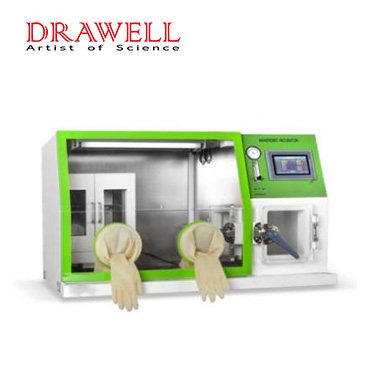Anaerobic bacteriology plays a pivotal role in understanding the delicate micro-ecological balance. With over 99% of the alimentary canal flora consisting of anaerobic bacteria, isolating, culturing, and screening these microorganisms becomes crucial for uncovering their beneficial functions and exploring their relationship with host nutrition, immunity, and health.
As the knowledge of anaerobic bacteria deepens, researchers are increasingly focusing on anaerobic culture, making the choice of a high-performance anaerobic incubator a hot topic in related fields. This article presents five essential factors to consider when selecting an anaerobic incubator.

Anaerobic State Stability
Ensuring good air tightness is vital, as it maintains a stable anaerobic environment within the incubator during operation and maintenance. The design of the operation hole should allow easy entry and exit of the operator's hands, minimizing the risk of outside air entering the inner cavity. Additionally, a well-designed transfer chamber facilitates rapid sample transfer, further reducing the chance of outside air entering the incubator.
Temperature State Stability
A stable temperature environment is critical for the cultivation of anaerobic bacteria, as it directly influences the reliability of the cultivation results. The selected anaerobic incubator should maintain a consistent and precise temperature throughout the cultivation process.
Humidity State Stability
Anaerobic bacteria require a stable humidity environment for proper cultivation. Extreme humidity levels can lead to atypical biological characteristics of bacteria, affecting the accuracy of identification results. Additionally, as the incubator is a closed cavity, preventing excessive evaporation of medium water is necessary to avoid the production of condensed water, which can lead to biological contamination and culture failure.
Anti-pollution Ability
An anaerobic incubator serves both as an operating and cultivation space. Therefore, ensuring the inner chamber's proper disinfection is crucial for the success of experiments. Anaerobic incubators should support UV disinfection and vital oxidant disinfection functions to prevent contamination.
Biological Detoxification
During growth and reproduction, all bacteria, including anaerobic ones, produce metabolic wastes. In a closed cavity like an incubator, the concentration of metabolic waste gas can increase and inhibit the growth and reproduction of viable bacteria. Thus, effective removal of metabolic waste gas is essential to maintain an optimal growth state for anaerobic bacteria.
In conclusion, when selecting an anaerobic incubator with superior performance, these five key indicators should be considered. Drawell, an anaerobic incubator manufacturer, offers reliable and comfortable anaerobic culture and operating environments. They provide various anaerobic incubators like Anaerobic Incubator LAI-3T-N, Anaerobic Incubator LAI-3T, Anaerobic Incubator LAI-3D, and more, ensuring the successful cultivation of anaerobic microorganisms for various research purposes.